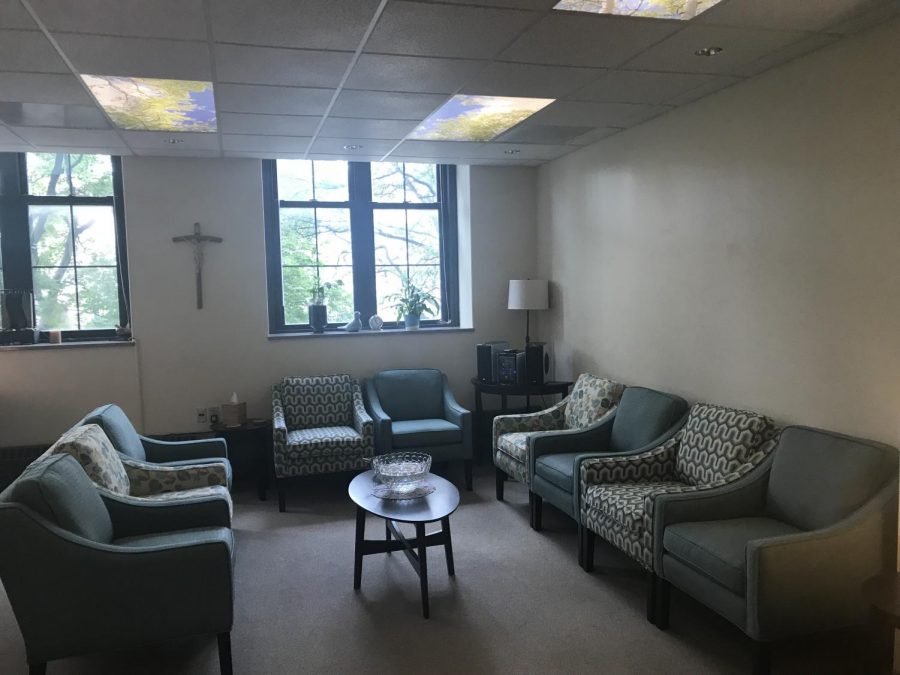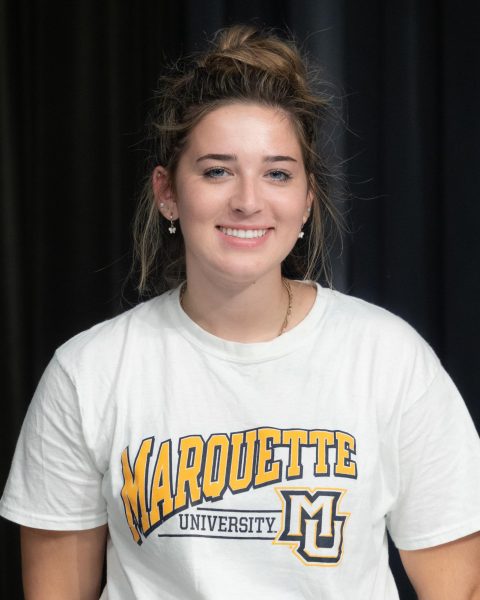New patients just arrived at Marquette, except they come in the form of high-fidelity mannequins.
As of this academic year, the Physician Assistant Studies program began the utilization of high-fidelity mannequins for simulation labs, where students practice hands-on learning for specific healthcare scenarios.
Joshua Knox, a clinical associate professor in the Department of Physician Assistant Studies said that while the mannequins have been used since they had access to them, the program is beginning to increase the utilization of the mannequins and all the features they offer.
“We’re certainly anticipating using not only the mannequins but using other modalities a lot more … virtual reality, AI and stuff like that, that’s outside these mannequins per se, this just one of the important pieces of our simulation program,” Knox said.
The majority of PA students have access to this new technology, besides clinical year students who are out working with patients in local hospitals. The students start getting exposure to the simulation lab in their first year of the program, and continuously work through the program levels.
Mary Jo Wiemiller, the department chair, program director and clinical associate professor, said the simulations involving the mannequins are usually run once a week, with the standardized patient aspect of the simulation four or five times a semester.
Knox, said the use of the mannequins is dispersed across the curriculum several times a semester. When the mannequins are not in use by the PA program, the physical therapy department can also utilize running realistic scenarios.
Wiemiller said the decision to use the mannequins was made after discussion with faculty, PA leadership, those that drive the curriculum and current students.
“When students look to come to PA programs these are some of the things that they look at across programs … we really developed what was called our whole experiential learning umbrella in our curriculum, and simulation is one piece of that,” Wiemiller said.
A big reason to attend Marquette was the accelerated PA program and the opportunities, Rachel Laliberte, a physician assistant student in her third semester, said.
In the last few years, the program has expanded the inpatient simulation rooms, with an ER suite, an operating room, an intensive care unit and an inpatient room.
“With so many learners and competition for clinical spots in programs and hospital systems, the mannequins provide opportunities to reinforce important concepts and prepare students that they might not get elsewhere,” Knox said.
Wiemiller said the mannequins themselves exhibit human features: crying, sweating, vomiting, blinking, coughing, and breathing. They also have arteries, veins, a heartbeat and a pulse.
They can have wounds, a seizure and also be incubated. Faculty can get behind a microphone and answer back to the students as the mannequin, how a typical patient in that situation would answer, alongside the mannequin voice prompts.
“I think that so far it provides real-world examples, obviously in a simulated setting,. it allows students to make mistakes in a low stakes setting as they are not real patients or people being practiced on,” Wiemiller said.
Knox said the students generally ask the mannequin questions about its medical history and perform some sort of assessment on its general condition to begin.
“The mannequins are preprogrammed to respond to whatever the students might do … they can have seizures, their pupils can act weird and they can sweat, those kinds of things,” Knox said.
Knox said there is also realistic timing set in place for the mannequins to react appropriately based on the scenario.
“For instance, if someone was about to have a cardiac arrest and you did not do anything to stabilize it, then the mannequin would have a cardiac arrest,” Knox said.
Wiemiller said the mannequins will “die” if not treated in time whether they have a respiratory or cardiac arrest or things of that nature, which is when students can use their advanced cardiac lift skills.
“One of the things people don’t think about is the teamwork, because all of healthcare is team-based learning and team-based action, so it gives them a lot of real practice to work with others,” Knox said.
Wiemiller also highlighted the importance that teamwork plays in simulation labs with the mannequins.
“They have an opportunity to really participate in team-based care, so they evaluate each other, and we also do interprofessional education scenarios within our building, so we have multiple other students from the College of Health Sciences and Dental school, involved in these simulated settings as well,” Wiemiller said.
Laliberte said she has used them in an asthma sim lab, and to practice listening to heart and lungs to detect abnormalities.
“During an Asthma sim lab, where a group of three students would walk into a room, and someone is having an acute asthma exacerbation, so we had to go in and assess them, listen to their breathing, decide what medication they needed, and the mannequin would be talking to us so you could hear the shortness of breath and listen to the sounds,” Laliberte said.
Laliberte said one of the things she finds helpful is vital monitors, which will change as you go through treating the patient and can tell you if the patient is getting worse or better.
“I have never worked in a hospital, so I am very thankful for the experience to have the simulation of like a hospital room, like the ER or inpatient rooms. Being on the other side of it, like walking into a room and learning what everything is and how to use it and the equipment is important,” Laliberte said.
Laliberte said having exposure to this environment before clinicals will really benefit her in the future.
Timothy Littau contributed to this story.
This story was written by Trinity Zapotocky. She can be reached at trinity.zapotocky@marquette.edu






